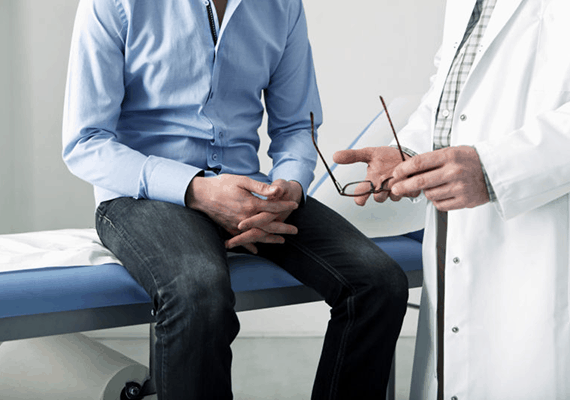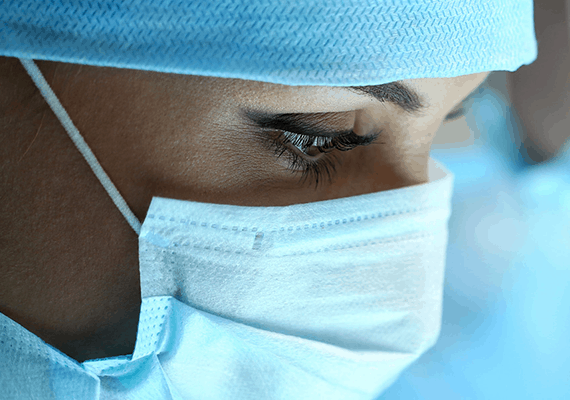
Colonoscopies
Colonoscopies in Westchester, NY
At Gastroenterology of Westchester, we provide expert colonoscopy screenings for patients throughout Westchester County, including Yonkers, White Plains, Scarsdale, New Rochelle, and surrounding communities. Whether you need a routine screening or are experiencing gastrointestinal symptoms, our board-certified gastroenterologists are here to help with compassionate care and advanced diagnostic tools.
What Is a Colonoscopy?
A colonoscopy is a procedure used to examine the lining of your colon and rectum using a thin, flexible camera called a colonoscope. This allows your doctor to check for abnormalities such as inflammation, bleeding, polyps, or signs of colon cancer. Our experienced team performs colonoscopies in a safe, comfortable setting at our Yonkers, NY facility.
Colonoscopy is a key part of preventive healthcare and may be recommended to evaluate:
- Chronic abdominal pain or cramping
- Unexplained weight loss
- Changes in bowel habits
- Rectal bleeding
- Family history of colon cancer or polyps
Why a Colonoscopy Matters: Early Detection Saves Lives
Colonoscopies are the gold standard for colon cancer screening and early detection of potentially serious gastrointestinal conditions. The American Society for Gastrointestinal Endoscopy recommends adults begin regular screenings at age 45. If caught early, colon cancer is highly treatable — which makes timely screening critical.
A colonoscopy can also help diagnose and monitor conditions like:
- Ulcerative colitis
- Crohn’s disease
- Diverticulosis
- Colon polyps
Preparing for a Colonoscopy
Proper preparation is key to a successful and accurate colonoscopy. Before your procedure, your doctor will provide detailed instructions to help cleanse your colon:
- The day before your appointment, you’ll follow a clear liquid diet and avoid all solid foods.
- You’ll take a prescribed laxative either the night before or in two doses (known as “split dosing”) to completely empty the colon.
- Avoid drinks with red, blue, or purple dyes, and do not eat or drink anything after midnight if sedation is planned.
Following these steps closely ensures the doctor can clearly view the colon and detect any abnormalities.
What to Expect During the Procedure
Your colonoscopy will be performed at our Westchester office by a skilled gastroenterologist with years of experience. You’ll wear a gown and receive a sedative to keep you comfortable during the procedure.
While you lie on your side, the doctor will gently insert the colonoscope into your rectum and guide it through your colon. Air may be introduced to expand the colon and improve visibility. If polyps are found, they may be removed for biopsy and further analysis.
The procedure typically takes about 30–45 minutes, and most patients report little to no discomfort thanks to sedation.
Recovery After a Colonoscopy
After the procedure, you’ll spend about an hour in recovery as the sedation wears off. It’s normal to feel bloated or gassy for a few hours as the air exits your colon. You’ll need someone to drive you home and should avoid work or major decisions for the rest of the day.
If polyps were removed, you may notice a small amount of blood during your next bowel movement. Most patients can resume their regular diet unless otherwise directed by their doctor.
Why Choose Gastroenterology of Westchester?
Choosing the right provider for your colonoscopy matters. At Gastroenterology of Westchester, we pride ourselves on:
- Board-certified GI specialists with years of colonoscopy experience
- State-of-the-art equipment and a modern, comfortable facility
- Convenient location in Yonkers, NY, easily accessible from anywhere in Westchester County
- Compassionate, patient-centered care with a focus on comfort and results
- We also provide upper endoscopy and hemorrhoids treatment
Whether you’re due for your first screening or need follow-up care, we’re here to support your digestive health every step of the way.
Serving Westchester County and Beyond
Our Yonkers office is conveniently located to serve patients throughout Westchester County, including:
- White Plains
- Scarsdale
- New Rochelle
- Bronxville
- Mount Vernon
- Tarrytown
- Eastchester
We welcome new patients and referrals – and we make it easy to schedule your colonoscopy with minimal wait times.
FAQs About Colonoscopies in Westchester
Q: What age should I start getting colonoscopies in New York?
A: The current guidelines recommend beginning screening colonoscopies at age 45, or earlier if you have risk factors like a family history of colon cancer.
Q: Will my insurance cover a screening colonoscopy?
A: In most cases, yes. Preventive colonoscopies are covered by insurance under the Affordable Care Act. We can help you verify your benefits before scheduling.
Q: Do I need a referral for a colonoscopy?
A: Some insurance plans require a referral. Our staff can guide you through the process and help coordinate with your primary care provider if needed.
Q: How do I choose the best colonoscopy provider near me?
A: Look for a board-certified gastroenterologist, a well-reviewed clinic, and a facility with strong safety protocols – like Gastroenterology of Westchester.
Schedule Your Colonoscopy Today
Don’t delay potentially life-saving screening. Our team is here to answer your questions and make your experience as smooth and stress-free as possible.
Call us or book online to schedule your colonoscopy at our Yonkers, NY office today.





